Stuart Vevers Creative Director at Coach on why he’s creating sustainable and forever-lasting products that will become the vintage luxuries of a new generation.
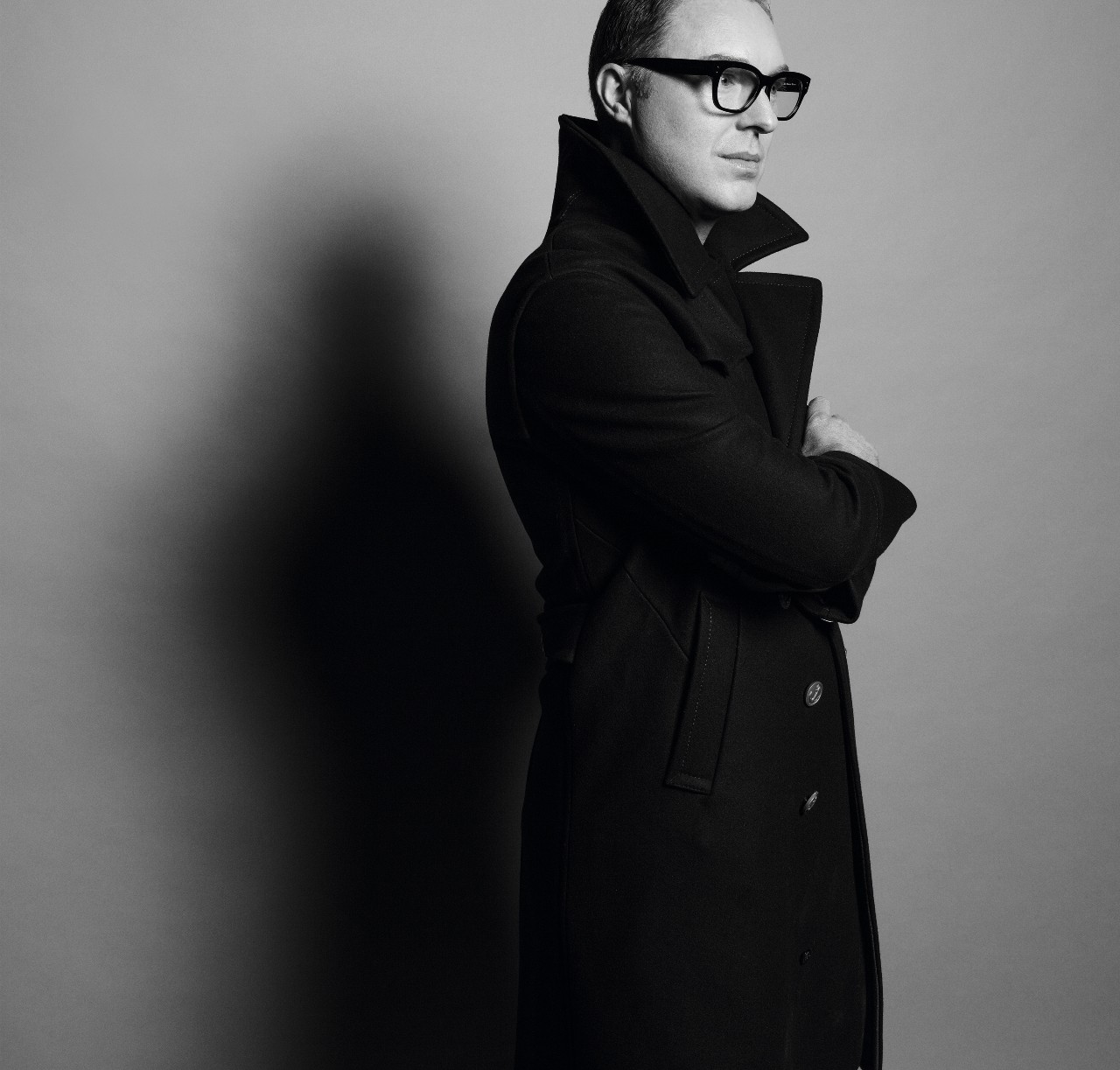
Stuart Vevers is one of the most experienced designers in the fashion industry. His first job was at Calvin Klein, followed by positions in the design teams of Bottega Veneta, Givenchy and Louis Vuitton, where he worked alongside Marc Jacob. He then went on to join Mulberry as Creative Director in 2005 and he became Creative Director of Loewe in 2007. His vast experience led him to join Coach as Creative Director in 2013 and bring his vision to the American brand. Since joining Vevers has worked to transform the brand, introducing ready-to-wear collections and opening a whole new chapter for the house. He has masterminded iconic collaborations with Selena Gomez and most recently, Jennifer Lopez, allowing the brand to expanded on an even greater scale.
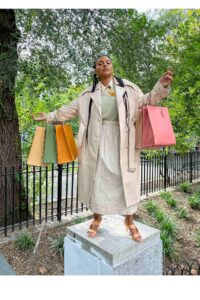
Coach’s strong roots in leather craftsmanship mean that Vevers was welcomed by a decades-long archive to delve into as he pleases and his approach is to combine the rich history of the brand with today’s trends and the needs of the modern woman. His latest collection Coach Forever does just that. Looking at the past, present and future the Spring/Summer collection focuses on long-lasting designs as well as putting sustainability in the forefront. We discover more about the latest collection as well as Vevers’ plans for the future of the House
We have seen a more youthful approach to the brand over the last few years – what can you tell us about your vision and how you have put that into practice so far?
My vision since I joined Coach has always been to reimagine the house’s heritage through the lens of now, juxtaposing our legacy in craft with pop culture and personal expression. I think a lot about what luxury and fashion mean to younger generations because it is often their collective mindset that is shaping the world. Today, what I think is important is more about an attitude and less about perfection –– a distinct attitude that enables a sense of belonging as well as individual expression.
Since I joined Coach, I’ve changed a lot of things to put my vision into practice, like introducing ready-to-wear collections and runway shows, working with Juergen Teller and Renell Medrano on our campaigns, reimagining our stores and introducing our house mascot, Rexy. I have also rethought the way we create, focusing on responsible approaches and sustainability, introduced vintage and upcycling, and built a unique community through our Coach family and friends. All of these things are about creating a world and a head-to-toe look that is grounded in the authentic attitude of New York. It combines the codes of American sportswear with a sense of individuality through special pieces that feel like one-off magical finds. There’s also a feeling of ease, joy and nostalgia which is optimistic and youthful.

This global pandemic has been a learning curve for many – what has come out of the crisis for you?
Like most people, the times we are living in forced deep reflection about what matters most to me. Our responsibility to people and the planet, the lifecycle of fashion, our communities — this time has become an opportunity to accelerate these things. I thought, “If not now, when?” It was very instinctive. We faced many new challenges when creating our collections, presentations and campaigns: the realities of working from home, of not being able to collaborate together in the same space, of dealing with continuous change. We had to rethink everything, and that actually became liberating.
What can you tell us about the spring/summer 21 collection “Coach Forever”?
The early inspiration for the collection was actually quite specific, grounded in New York’s Upper East Side. But as early 2020 evolved, many things we were working on just felt (if I’m really honest) irrelevant, and small. We naturally started to pivot, to think differently. It was very instinctive, but at a certain point some things didn’t feel right, and we had to dig deeper. The result of this is a collection that rethinks seasonality and is grounded in responsibility, renewal and reduction. It features new techniques like vegetable-tanned, naturally-dyed leather, recycled materials that give a second life to plastic bottles, thoughtfully upcycled pieces, vintage and archival designs.
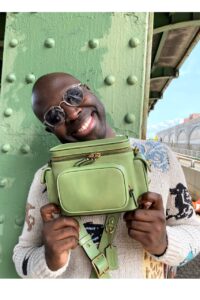
How important is it to preserve traditional leatherwork and craftsmanship at the brand?
Before I came to Coach, I worked at traditional European luxury houses, where I learned everything about craftsmanship and creation. Craftsmanship will always be important to me when I design, as it’s something I love and have deep respect for. Coach has a legacy built on its leather craftsmanship, but at the same time, the house has an un-precious approach which I find modern, fresh and inspiring.
Are there any periods in the archive of Coach that you are particularly inspired by?
It would have to be the Bonnie Cashin era of the 60s and 70s. Bonnie was Coach’s first lead designer, and it was her vision of clever functionality, colour, simplicity —and also, her sense of humour — that defined the house. Over the years, I’ve remade and reissued many of her bags: the Shopping Tote, the Dinky, the Duffle, the Saddle Bag and the Barrel. They continue to have appeal and relevance today as much as they did fifty or sixty years ago. In the spring collection, I also recreated archival pieces originally designed by Bonnie, from her days beyond Coach. I wanted to pay tribute to Bonnie’s legacy more broadly. This year marks the 80th anniversary of Coach, and so it felt like the right moment to recognise Bonnie and the huge impact she made, not just at Coach, but more broadly in fashion.
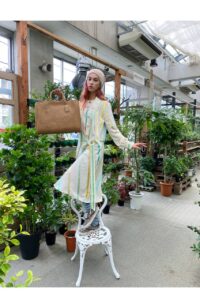
How did you find the process of creating this collection throughout unprecedented times and did it have any influence on the collection and your creativity?
The challenges my teams faced were the challenges that many have faced during this time — the realities of working from home, and not being able to collaborate together in the same space and dealing with continuous change. And rethinking everything. Personally, I find change energising because it’s an opportunity to be creative, and to solve problems creatively. I have been genuinely amazed by, and grateful for, the tenacity and creativity of my teams as we’ve discovered new ways of working together and doing things.
Of course, responsible fashion is a key topic today – what can you tell us about yours and the brand’s approach to producing responsible luxury goods?
As part of my vision for Spring, I wanted to explore and introduce more responsible materials; our original natural leather, up-woven bags, and bags made of recycled materials. More broadly, though, our position on sustainability at Coach is grounded in the idea that everything we make is crafted to last and intended to be worn and loved for generations, and then passed down. This refers to the craftsmanship of our bags, the materials and quality standards that ensure they will last. I like to think of our products as “future vintage,” pieces that will have relevance many years from now, as we’ve seen with the bags from our archives. With every collection, my team and I are exploring new ways of designing more responsibly. It’s an iterative process grounded in designing, exploring, and learning.
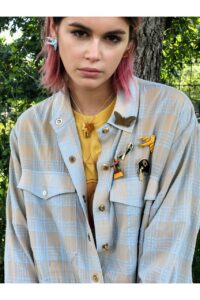
What is your professional motto?
One of my favourite mottos is from a print by the artist Anthony Burrill: “Work hard and be nice to people.”
What is something you would like to achieve this year?
Like many of us, I’m looking forward to being able to see in person many of the people I love. Last year, I became a father to twins, and so one of the things I’m looking forward to is introducing my parents to their grandchildren as soon as it is safe to do so.
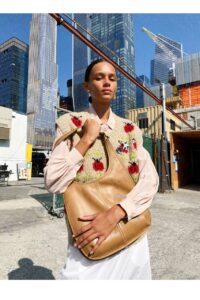
Why do you feel it’s important to highlight the history of the brand and how do you go about balancing the past but still keeping it relevant for today’s customer?
One thing I really love about designing for a house with a legacy like Coach’s is that there’s a story — and an existing emotional connection — that I can explore. Coach has an authority in leathercraft, but more than that, it has a rich history of marking moments in people’s lives. Ever since the beginning, Coach bags have been designed to last, which means they are often thought of as keepsakes, the kind of pieces our clients will wear for years, and then pass to the next generation. So, while it is always important for me to evolve the house and reach new audiences, it has been equally important to honour the stories that have made the house what it is over the years. It’s a narrative that comes with a lot of emotion and feeling and inspires my designs.
What is something you would like to see taken further when it comes to sustainability in the manufacturing of luxury goods and what is your next step at Coach when it comes to ethically producing products?
Often when we talk about sustainability in our industry, what we are talking about is doing minimum damage in the way we source materials for, and craft our products. The next step that I’m eager to explore is regeneration — processes that actually heal the planet as we create things, instead of depleting it. An example of this is the Original Responsible Leather my team developed for Fall 2021. Locally sourced from the farms where the cows were raised to the ingredients used in the dyes and finishes, it was made in partnership with a family-run tannery that supports responsible farming practices that prioritise soil health. Soil health is vital to life on earth and sustaining it. It is where nutrients are cultivated. Healthy soil also captures carbon from the atmosphere. It’s materials and practices like this I want to pursue more in the future.
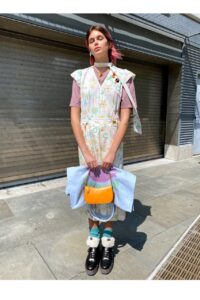
What is the biggest challenge you currently face?
The challenges I am currently facing are the challenges that many of us are facing, such as not being able to see loved ones in person, and living with a degree of uncertainty. In the challenges, though, I’ve been able to find a kind of optimism, hope that these times will inspire meaningful and positive change. I remain hopeful for a better future and believe that these times have encouraged dialogues about our responsibility to one another that have needed to happen for a long time.















